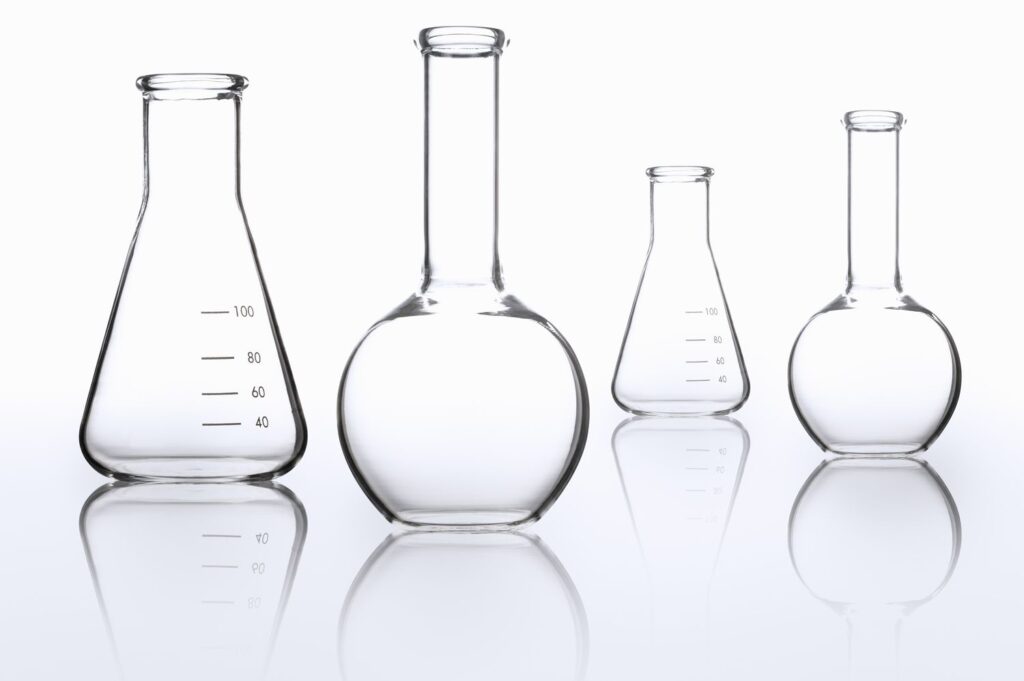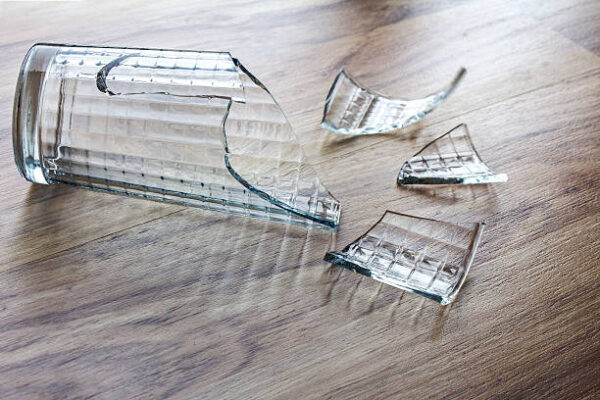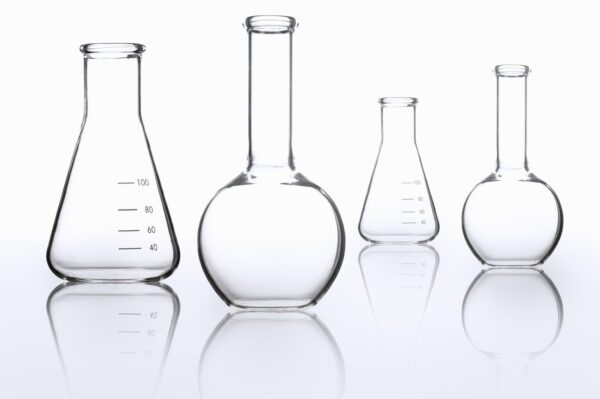
Credit: Yagi Studio / Getty Images
Introduction
Glassware is an essential component in various scientific and healthcare settings. From laboratories to hospitals, glassware is used in animal and human patient care, research, and diagnostics.
Proper glassware disposal, especially laboratory glassware, is crucial for maintaining a safe and sustainable environment. Whether it’s broken or unbroken, glass items must be disposed of responsibly to prevent accidents and minimize environmental impact.
In this blog post, we will walk you through the proper steps and precautions to take when discarding items such as blades, instruction, available, chemical reagent bottles, infectious or radioactive contaminants, Pasteur pipettes, scalpels, suture needles, slides, treatment, hypodermic needles, blood vials, culture dishes, keep, puncture, cover slips and other broken and unbroken glass or plasticware that have been in contact with infectious agents or that have been used in animal or human patient care or treatment, at medical, research or industrial laboratories and items that cannot be recycled. In this blog post, we will explore the various methods of glass disposal, the importance of proper glassware disposal, and the potential consequences of improper disposal. Let’s dive in!
How do you do glassware disposal?

When it comes to glass disposal, there are several factors to consider. First and foremost, if the glassware is contaminated with chemicals or other hazardous substances, it must be handled and disposed of with utmost care. In such cases, it is recommended to use a designated disposal service provided by your university or research institution. These services ensure that the glass is properly handled and disposed of according to safety regulations.
If the glassware is empty and free from any hazardous materials, you can dispose of it with your regular trash. However, it is important to take certain precautions to avoid accidents. Broken or unbroken glass should be placed inside a sturdy cardboard box or wrapped in multiple layers of newspaper to prevent injuries during transportation. Make sure to label the box as “Broken Glass” or “Fragile” to alert others about its contents. Additionally, you can tape the top of the box to secure it further.
How do you dispose of laboratory glass?
Laboratory glassware often comes in contact with chemicals, biological samples, or radioactive substances, making its disposal more complex. Before discarding in laboratory glassware containers, ensure that the glassware is empty and free from any residues. Remove any labels or deface them to prevent potential misuse. It is crucial to separate broken or unbroken glass from all other waste to avoid contamination.
Why broken glassware must be disposed of properly?
Proper disposal of broken glassware is essential for several reasons.
- Firstly, broken glass can cause serious injuries if not handled and disposed of correctly. By placing broken glass in a sturdy container, such as a cardboard box, you minimize the risk of accidents during transportation.
- Secondly, improper disposal of broken glass can have detrimental effects on the environment. Glass takes a long time to decompose, and when broken glass ends up in landfills, it can contaminate the soil and water sources. By disposing of broken glass properly, you contribute to environmental sustainability and reduce the potential environmental impact.
What type of waste is broken glass?

Broken glass is considered a hazardous waste due to its potential to cause injuries and its slow decomposition rate. It is important to handle broken glass with caution and dispose of it separately from regular trash. By treating broken glass as hazardous waste, you ensure the safety of waste management personnel and minimize the risk of accidents during the disposal process.
Infectious or Radioactive Contaminants
Dispose of these materials following the guidelines provided by your local health department or regulatory agency. They may require specialized containers or designated disposal facilities to prevent any potential contamination. One of the safest methods is to use a blade bank, which is a specialized container designed to safely store used blades. Always keep in mind the safety of others when disposing of medical waste. Use proper containers and follow the recommended disposal methods to prevent injuries and minimize the risk of contamination.
How is glassware disposed of?
Glassware can be disposed of in different ways, depending on its condition and contents. Empty chemical reagent bottles, for example, can be discarded in regular trash after ensuring they are free from any hazardous residues. Before discarding, remove any labels or deface them to prevent potential misuse.
When it comes to contaminated glassware, it is recommended to use a designated disposal service provided by your university or research institution. These services are equipped to handle and dispose of glassware containing hazardous materials safely and in compliance with safety regulations.
Full and Proper Use of Syringes and Blades in Animal or Human Patient Care. When it comes to providing animal or human patient care, it is crucial to ensure the full and proper use of medical equipment. These boxes must be easily accessible and clearly labeled to prevent accidental needlestick injuries. It is essential to separate sharps waste from all other waste to minimize the risk of contamination. Additionally, labels of empty chemical reagent bottles should be removed before discarding them.
Importance of proper glassware disposal for environmental sustainability
Proper glassware disposal plays a significant role in environmental sustainability. By handling and disposing of glassware responsibly, we can minimize the environmental impact associated with broken or unbroken glass. When glass ends up in landfills, it takes a considerable amount of time to decompose, contributing to the accumulation of waste.
Moreover, when broken glass is not properly separated from other waste, it can contaminate recycling streams, making it difficult to recycle other materials. By disposing of glassware in a separate container, we ensure that it can be handled appropriately, either through recycling or designated disposal methods.
Environmental impact of improper glassware disposal
Improper disposal of glassware can have serious environmental consequences. Broken glass that ends up in landfills can contaminate the soil and water sources, posing a threat to plant and animal life. Glass takes a long time to decompose naturally, making its accumulation in landfills a long-term environmental issue. You can Bag Bottles before discarding them in the laboratory because waste in the laboratory apply disposed of separately Including line. You must discard broken glass or plastic waste too.
Furthermore, when broken glass is not properly separated from other waste, it can cause difficulties in the recycling process. Glass contamination in recycling streams reduces the quality of recycled materials and increases the overall cost of recycling operations. By disposing of glassware separately and ensuring proper recycling, we can minimize these environmental impacts.
Tips for proper glassware disposal
- Always handle broken glass with caution to prevent injuries. Use gloves and protective eyewear if necessary.
- Triple rinse and deface labels of empty chemical reagent bottles before discarding in laboratory glassware containers.
- Keep glassware for disposal separate from all other waste in the laboratory.
A Comprehensive Guide
When it comes to laboratory work, the proper disposal of waste is of utmost importance. Improper handling of laboratory waste can have serious consequences not only for the environment but also for the health and safety of those working in the lab. Various categories of waste may be generated in a laboratory setting, including chemical waste, biological waste, and sharp objects. Now that we’ve covered the different types of waste and their disposal methods, it’s important to emphasize the significance of proper information and training. By adhering to the guidelines outlined above, you can ensure that waste in your laboratory is handled and discarded without compromising the health and safety of individuals or the ecosystem.
Broken glass and crockery should be placed in a sturdy cardboard box or wrapped in layers of newspaper. Seal the top of the box with packaging tape to prevent any shards from escaping. It is important to handle broken glassware with care and avoid direct contact with infectious agents or radioactive contaminants.
Conclusion
The disposal of broken glass and crockery should never be taken lightly. Proper disposal is not only necessary for the safety of individuals handling the broken glassware but also for the overall well-being of the environment. By following the guidelines outlined in this blog post, you can ensure that broken glassware is disposed of in a responsibly and securely manner. Remember to always exercise caution and adhere to any regulations or instructions provided by your local authorities or institution.

